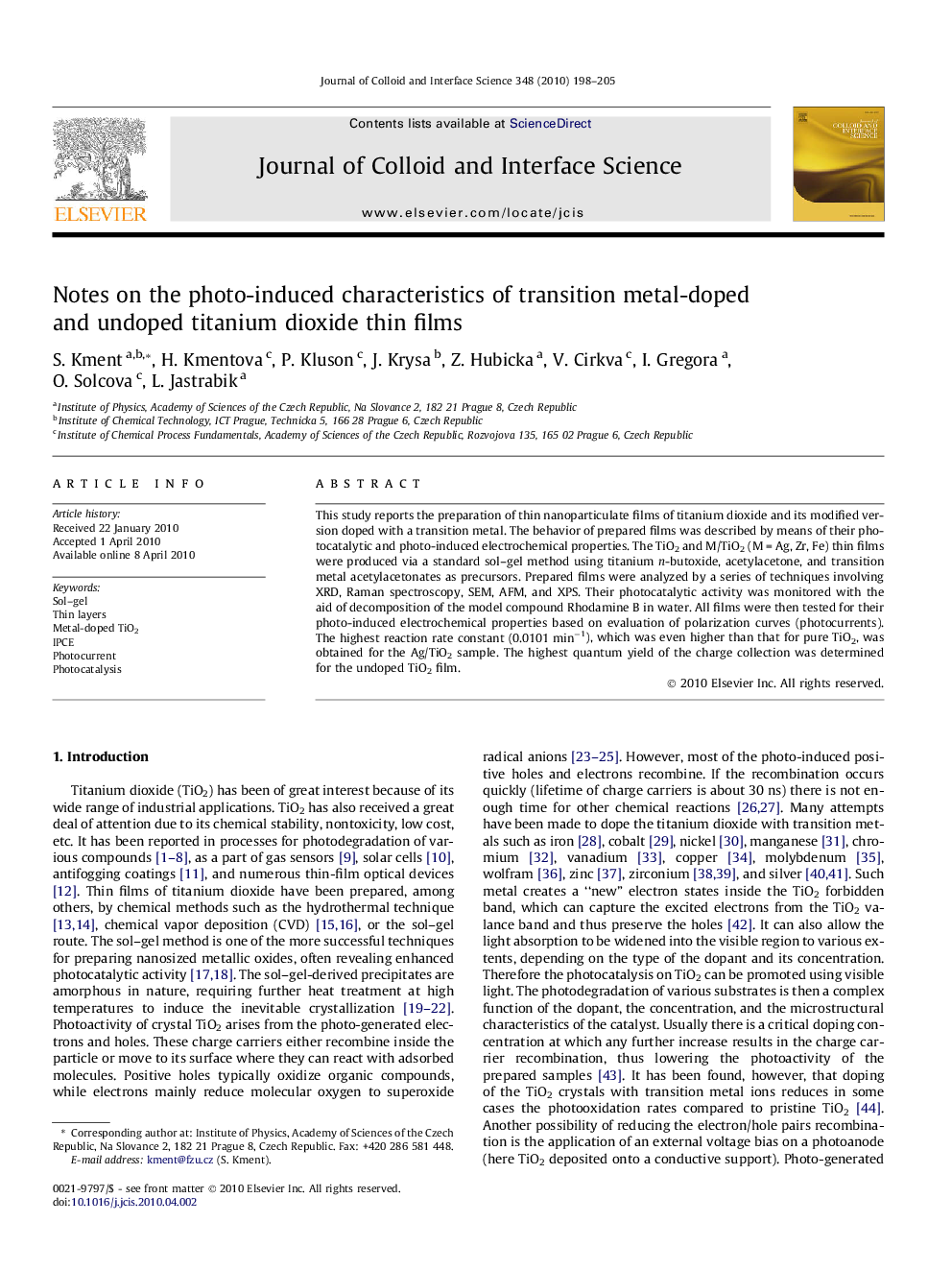| Article ID | Journal | Published Year | Pages | File Type |
|---|---|---|---|---|
| 609384 | Journal of Colloid and Interface Science | 2010 | 8 Pages |
This study reports the preparation of thin nanoparticulate films of titanium dioxide and its modified version doped with a transition metal. The behavior of prepared films was described by means of their photocatalytic and photo-induced electrochemical properties. The TiO2 and M/TiO2 (M = Ag, Zr, Fe) thin films were produced via a standard sol–gel method using titanium n-butoxide, acetylacetone, and transition metal acetylacetonates as precursors. Prepared films were analyzed by a series of techniques involving XRD, Raman spectroscopy, SEM, AFM, and XPS. Their photocatalytic activity was monitored with the aid of decomposition of the model compound Rhodamine B in water. All films were then tested for their photo-induced electrochemical properties based on evaluation of polarization curves (photocurrents). The highest reaction rate constant (0.0101 min−1), which was even higher than that for pure TiO2, was obtained for the Ag/TiO2 sample. The highest quantum yield of the charge collection was determined for the undoped TiO2 film.
Graphical abstractThe photocurrent trend of the Fe-doped TiO2 thin films. These layers tend to create nucleating centers initiating the crystal growth in their close neighborhood.Figure optionsDownload full-size imageDownload high-quality image (140 K)Download as PowerPoint slide
